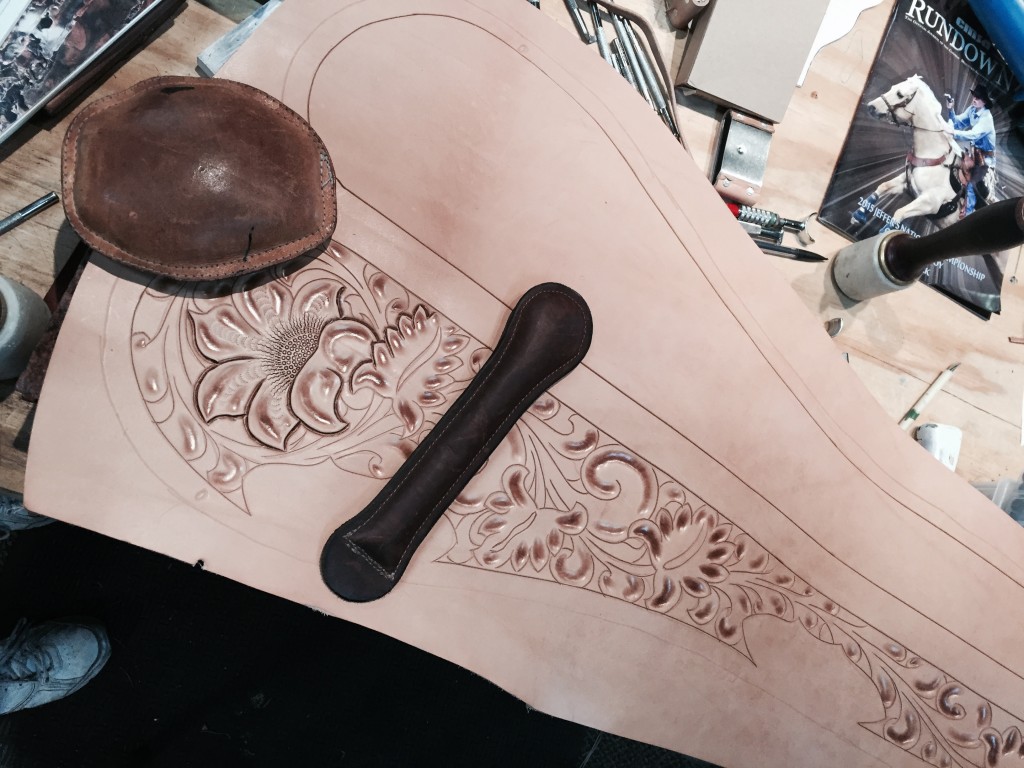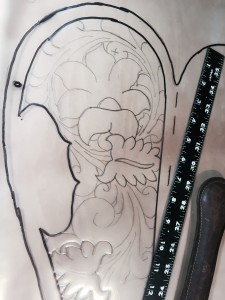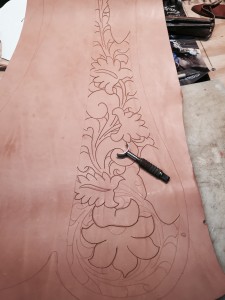
Working on a Rifle Scabbard
This is the start of a Saddle Carry type Rifle Scabbard. I’m using 7/8oz. Veg Tan Leather. The Lining will be Sheep Wool. Using the lighter tooling leather (7/8oz) works when lining a project like this. When I do one that is not lined I use 9/10 oz Veg Tan. Here are some options to think about for this project…
- Unlined Veg Tan, 9/10 oz. This thickness will help keep it’s shape when the Rifle is not in it.
- Lined Veg Tan. Use 7/8oz for the outside and 2/3oz Veg Tan for the inside layer. The thickness will keep the shape when the Rifle is not in it. Some people like the smooth lining look.
- Lined Veg Tan w/Chap Leather Liner. Use the 7/8oz Veg Tan outer then line with Chap or Upholstery Leather. This combo allows you to pick a color for the inside and the thickness helps with holding the shape.
- Lined Veg Tan w/Sheep Wool. Use 7/8oz Veg Tan outer, line the inner with Bark Tanned Sheep Skin (be sure to get Bark Tan and not Chrome Tan Sheep Skin/wool, the chrome tan could leave marks on the metal surface of the gun).
Does it matter what leather I use to make this?
I have seen other types of leather used to make them. (If the project will have tooling, use Veg Tan). Your project should protect the gun metal and wood stock. Chrome tan leather can mark the surface when the acids and salts used for tanning come in contact with the metal surface over a period of time. Here are some options…
- Harness Leather. Harness Leather has an oil/wax finish and used in horse tack. The “stuffing” of oils and waxes when tanning makes this leather water resistant (and to sweat) and used often by itself or as a lining for horse gear that is in direct contact of sweat.
- Latigo Leather. Same qualities as harness leather. The traditional burgundy Latigo has been used for 100 years or more in horse gear. it is available in a few other colors as well though it may take some searching to find them. Be sure to get the appropriate thickness for your project.
- English Bridle Leather. Same qualities as Harness Leather, it does have a little “dryer” surface lacking the oils and waxes on the surface. Very sweat resistant as well. It is available in different thicknesses so be sure to get what is appropriate for your project.
Think about what the project requires, what qualities are most important for the project, that will help with your decision of what leather to use.
Whats next??
I’m going to show the steps I used to make this piece and will post each step until delivered. The posts will be in the order I used to progress the project.
The pattern is drawn out on velum (water resistant thin plastic you can draw on) and will be transferred on the properly cased leather.


If I can help you with questions on your project leave a comment and I will be sure to reply.
